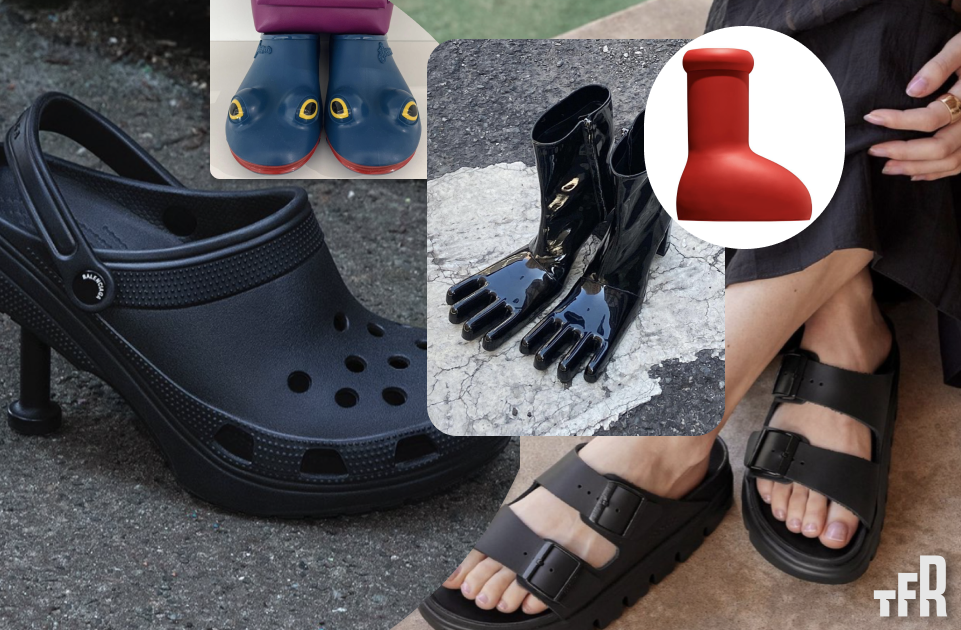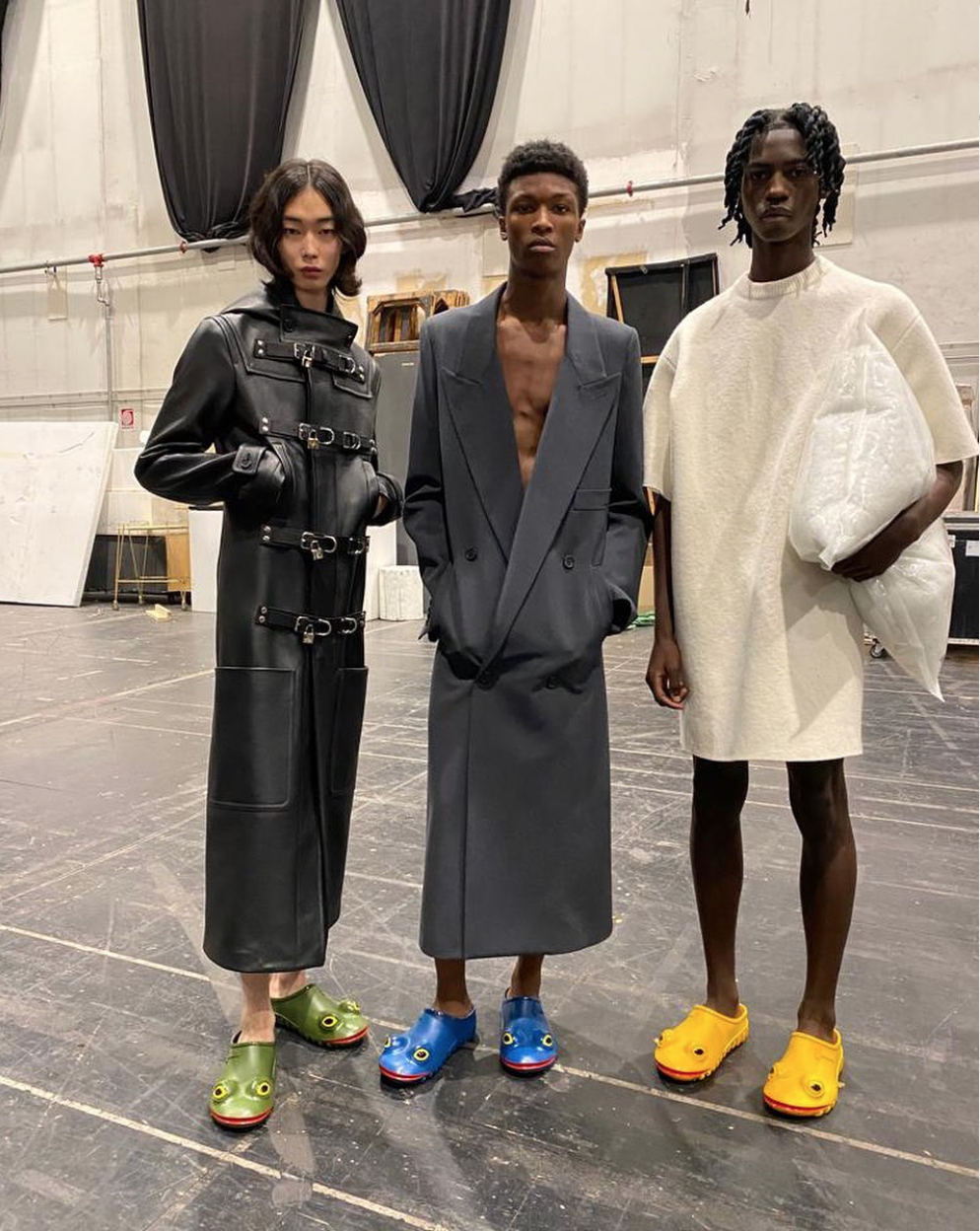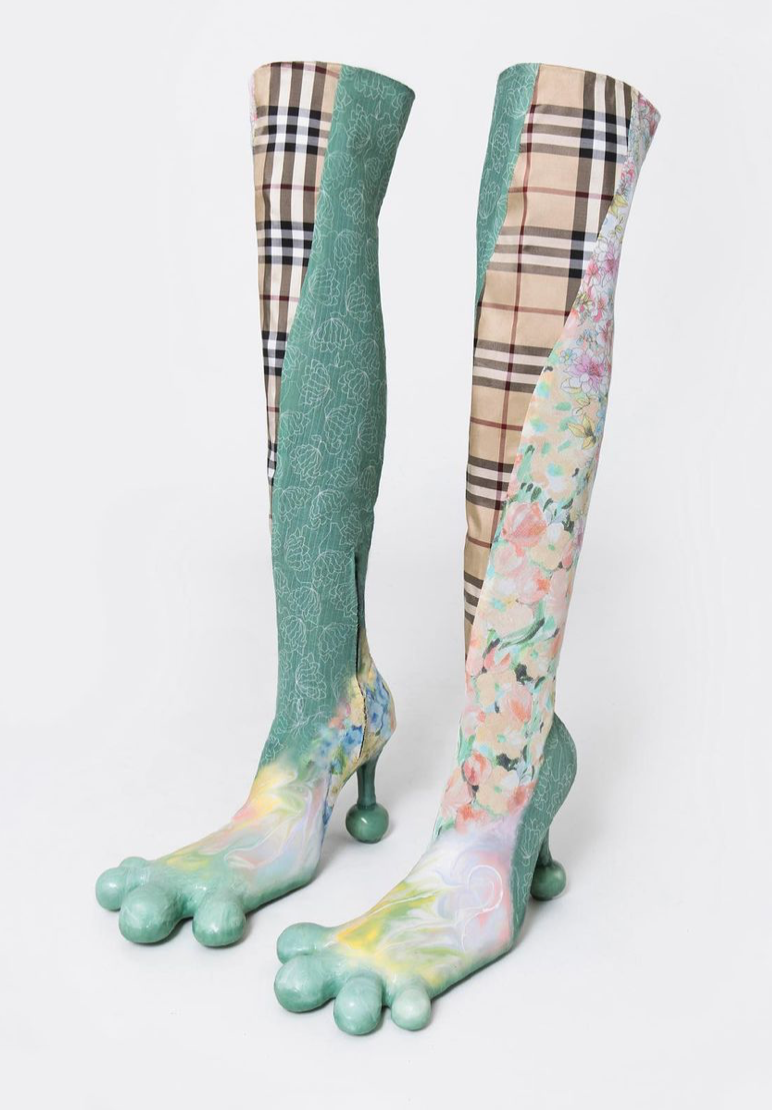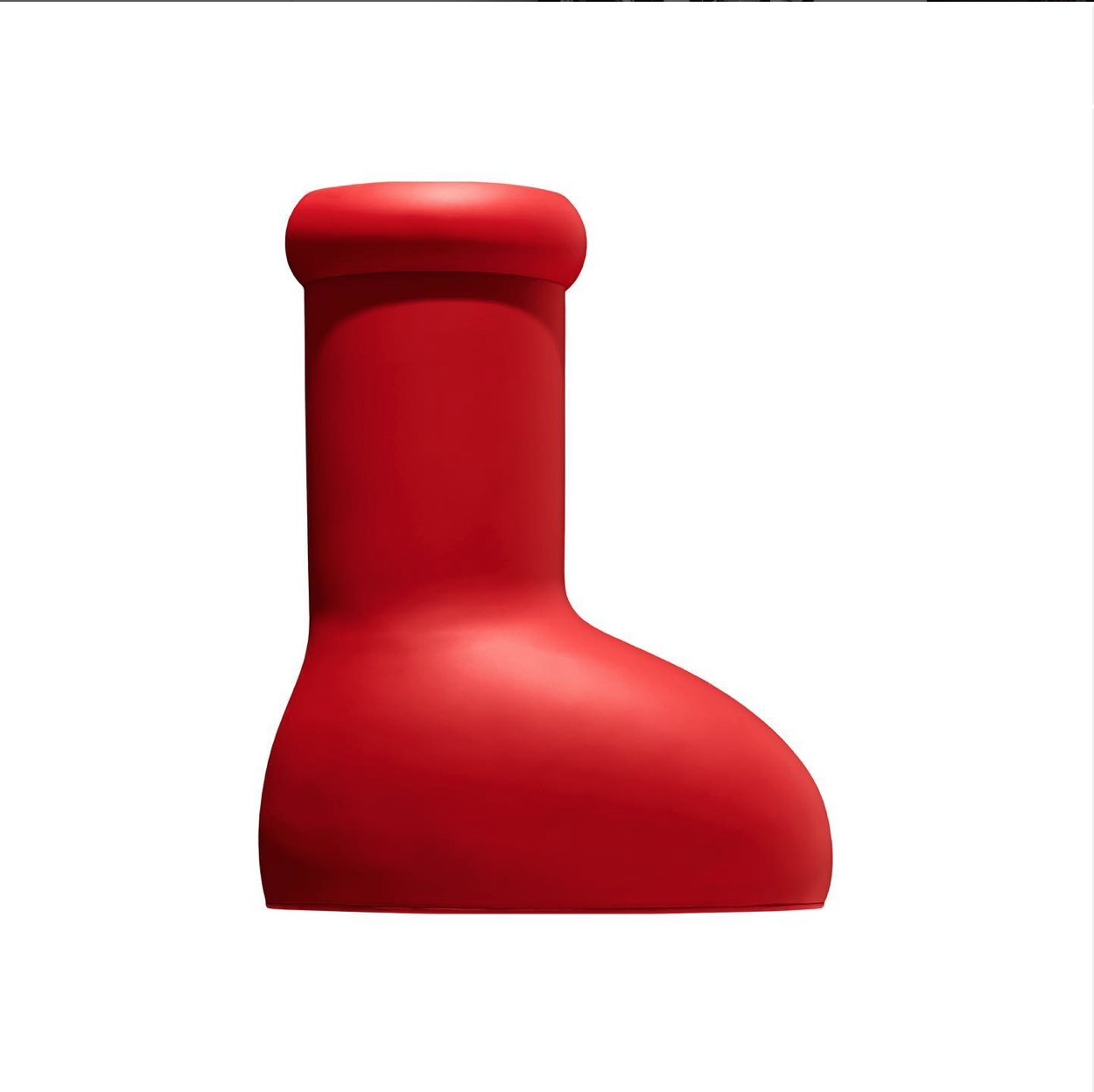The rise of "ugly" shoes: How fashion is challenging our perception of beauty
Written by Ilman Ramadhanu | Read in Indonesian
If you have spent time mindlessly scrolling through social media, you may have come across people wearing a pair of big red boots reminiscent of Astro Boy’s shoes. These cartoonish boots are part of the recurring trend of unusual footwear known as “the ugly shoes”.
JW Anderson’s frog-shaped slides | Source: Instagram @JW_Anderson
This trend has given birth to some truly unique designs, from the iconic Margiela’s tabi boots and Y/Project’s thigh-high ugg boots to JW Anderson's latest zoomorphic frog-shaped slides and cat paw heels. However, not all “ugly shoes” are so outlandish. Ordinary yet visually unappealing shoes like Crocs, clogs, dad sneakers and birkenstocks have, at one point, deemed as the hottest fashion trend.
Fashion in the age of the Internet
There is almost an obvious answer as to why these shoes keep showing up. When asked about the emergence of this trend, fashion stylist Vanya Harahap said, “It raises the question of how willing people are to buy them for the sake of ‘the gram’.”
Yes, going viral on social media is perhaps one of the reasons behind the existence of these reality-bending shoes. The Internet is a busy place, and a stunt like AVAVAV’s pair of high-heeled boots with four toes and textures that resemble human innards is filled with enough shock value to cut through the noise. Whether you hate it or love it, people will engage.
AVAVAV monster boots | Source: Instagram @AVAVAV
This notion is not exactly so far-fetched as the Internet has completely changed how the fashion industry operates, particularly in how it fosters the culture of using gimmicks to generate social buzz.
This is evident in how fashion shows are conducted today. Brands such as Coperni and AVAVAV have recently embraced a more theatrical approach to fashion presentation, with Coperni famously sending a naked Bella Hadid down the runway and spray-painting a slip-on dress on her body, and AVAVAV having models intentionally fall on the runway.
Beate Karlsson, the creative director of AVAVAV, explained in an interview with 032C that she chose to present the collection in this manner to embrace the Internet as a tool for generating attention.
While dramatic fashion presentations are nothing new, they have been somewhat forgotten. However, the current emphasis on virality has sparked a resurgence for this approach, inadvertently contributing to the growing popularity of these ugly shoes.
Challenging beauty norms
However, dismissing this trend as solely driven by a desire for virality would undermine its profound impact as these unconventional shoes are reshaping the fashion landscape of today, taking us to a place where the line between real and unreal is blurred.
As explained by MSCHF, the creative force behind the Astro Boy boots, these boots were aimed to bring our virtual selves into the physical realm. Loewe made a similar statement with their spring 2023 collection which featured grass-sprouting sneakers.
MSCHF Astro Boy boots | Source: Instagram @MSCHF
This is perhaps fueled by our relentless exposure to virtual technology, acting as a catalyst for transforming not only our appearance, but also our identity. Consequently, it fosters a distorted notion of beauty that is physically unattainable in the real world.
Fashion designer Karina Nasywa views this as a positive shift, signifying a much-needed embrace of innovation and a broader definition of beauty. She noted, “On the runways, these ugly shoes are making a statement in a pool of classics like Manolos and Louboutins. It’s a good thing to see that the industry is open to innovations and perceptions of beauty, (fostering) inclusivity.”
Disrupting luxury fashion
In luxury spaces, "ugly" shoes also often serve as vehicles for designers to disrupt and redefine the concept of luxury itself. Phoebe Philo, the former creative director of Celine and hailed as the queen of ugly shoes by Karina, played a significant role in popularising Birkenstock.
In a 2013 Vogue article titled “Pretty Ugly; Why Vogue Girls Have Fallen for the Birkenstock”, it was noted that Birkenstock, a footwear known for its strappy ergonomic design and comfort, had never been universally seen as visually appealing until Philo sent them down the runway for Celine spring 2013 collection.
Philo’s decision to incorporate Birkenstocks was driven less by their perceived “ugliness”, but more by their comfort, which aligns with the practical nature of her design philosophy. Women's fashion often requires sacrificing comfort for style, but Philo's Birkenstocks challenged this notion. Philo gave, what Vogue called, a stylistic renaissance to the Birkenstocks by adding a luxurious mink fur lining, proving that style and comfort need not be mutually exclusive.
Demna Gvasalia also explores the intersection of high fashion with ugly shoes as the creative director of Balenciaga. His portfolio includes the chunky platform crocs, the high-heeled Vibram (a durable five-fingered rubber shoes often used for outdoor activities) and the triple S sneakers (a layer of exaggerated chunky soles sneakers with colourful designs, widely known as the dad sneakers).
Unlike Philo who gave Birkenstock a fashion makeover, Gvasalia takes a different approach by literally remaking these shoes but with premium materials. However, some critics argued that his designs are intended solely to lure impressionable consumers and that they cheapen the notion of luxury.
Gvasalia discussed his approach in an interview with the Washington Post, revealing that his aim is to disrupt the perceptions of luxury. His work exemplifies that even the most ordinary items can be transformed into high-fashion pieces, expanding the boundaries of luxury.
Gen Z’s expression of individuality
The “ugly shoes” trend also reflects the growing influence of Gen Z in the fashion industry. McKinsey & Co reported that Gen Z views consumption as a means of expressing their individual identity, and the clothes they wear are an extension of themselves, allowing them to experiment with different ways of presenting their unique identities.
When referring to these ugly shoes, Vanya thought that the appeal lies in their distinctive and individualistic nature, in the sense that what might seem ugly to some perhaps fits the style of others. This aligns with Gen Z’s values and attitudes towards fashion. The quirkiness and the limitless style that these shoes offer provide them with the freedom to express themselves as they see fit.
Gen Z makes up around 25% of the world's population and accounts for a significant portion of the global fashion consumer base, responsible for 40% of all fashion purchases in 2020. As a result, they hold substantial purchasing power in the fashion industry. In other words, what Gen Z likes matters.
As one of the most influential demographics in the industry, their preferences carry significant weight in the global fashion market, prompting the industry to shift towards more personalised, individualistic styles to cater to this growing consumer base.
Ultimately, while it is easy to dismiss these “ugly” shoes as mere clickbait, their existence compels us to shift our perceptions of beauty and identity. By challenging traditional notions of fashion, these shoes remind us that beauty is subjective and can be found in unexpected things.






















